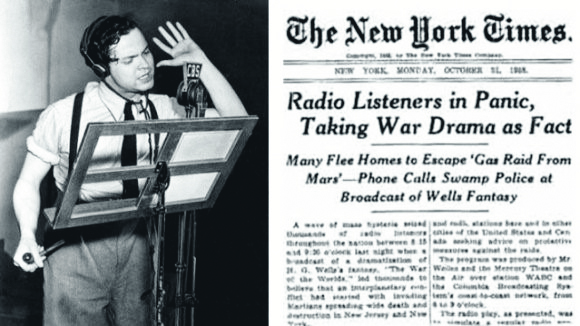
Every April we kick off the month by approaching everything we read online or in the paper with a healthy dose of scepticism. April Fools’ Day on April 1 brings with it crazy tall tales, satirical news articles, and numerous joke social media posts. It’s all in good fun, but sometimes, people have a hard time recognising the joke. Given that hoaxes aren’t just limited to being perpetrated on April Fools’ Day, it’s no wonder many people often believe hoaxes to be true.
It’s easy to blame the internet for this mass hoodwinking of the population but although hoaxes are easier to share online with a single click of a button, they’re not new.
In 1844, The Sun newspaper in New York published an article by Edgar Allan Poe that has now come to be known as The Balloon Hoax. The article chronicled in detail the crossing of the Atlantic Ocean in a lighter-than-air balloon by Monck Mason and people at the time gobbled it up. Poe was quoted as saying afterwards, “I never witnessed more intense excitement to get possession of a newspaper,” when describing the hordes of people descending on The Sun building. It only took two days for the article to be declared a hoax and for The Sun to publish a retraction.
On October 30, 1938, the now infamous The War of the Worlds radio drama was broadcast on CBS Radio. The drama was an adaptation of H G Wells’ 1898 novel and shot actor and narrator, Orson Welles, to instant fame. The drama is known today for causing widespread panic as listeners believed that the fake news broadcasts that made up the majority of the script were real, however this is a perfect example of misleading journalism. Historians suggest that newspaper coverage of the aftermath greatly exaggerated the extent of the panic, and that the influx of phone calls to the station were those of rational listeners seeking to clarify that the drama was fictional.
In the early 2000s, with the World Wide Web still shiny and new, folk took to the net to chronicle their day to day lives via web logs, better known today as blogs. Unlike today, where you can follow your favourite celebrity on Twitter or Instagram, people had to cyber stalk famous people via their websites or, you guessed it, their blogs. But how could people be sure that the person writing the blog was who they said they were? Simply put, you had to rely on context and critical thinking, which not everyone did. This is how people came to believe that President Bill Clinton was sharing his daily musings with the world at billclintondailydiary.blogspot.com. The blog ran from June 2004 through to March 2005 until it was abandoned after being labelled a hoax. Hoaxes at heart are meant to entertain and this one did as anyone who had a chuckle at reading the part about Clinton and Robin Williams dancing to Mariah Carey can attest.
So just remember, it’s all well and good to live by the mantra ‘just because it’s on the internet, doesn’t mean it’s true’, but that doesn’t mean that you can’t be duped by a hoax in a physical article, on television, or even in a book.







